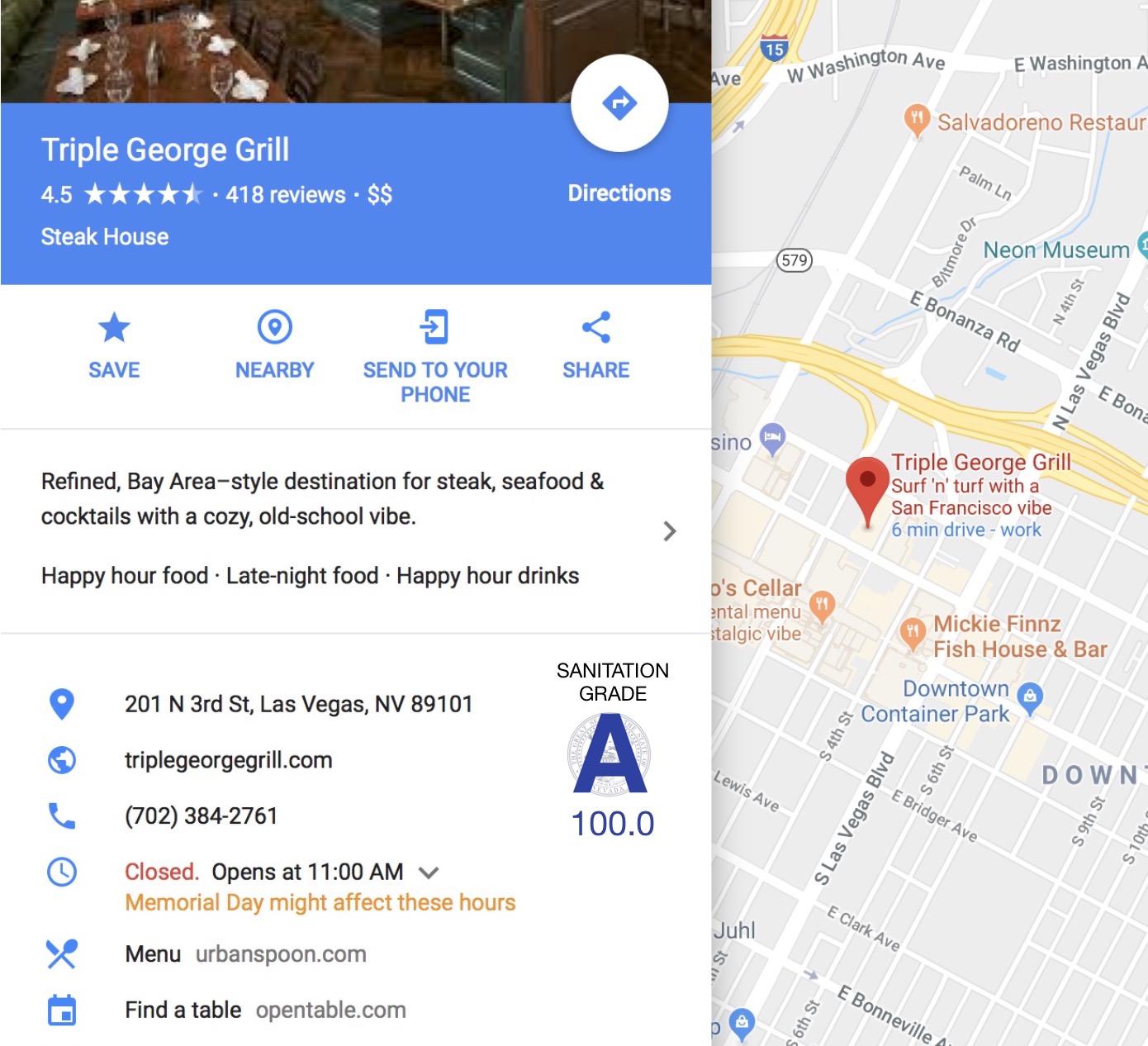In a digital age, why aren’t restaurant grades in search results?

Recently, my dad’s cousin (whom I haven’t seen in seven years) visited from North Carolina. He was in Las Vegas for just one night and invited me to pick a spot for dinner. I asked a friend for recommendations; I researched options online. I read reviews and scoured menus. I opened Google Street View and scouted the area.
Finally, I booked a reservation on Bootlegger Bistro’s site. But there was one thing I didn’t do: check the sanitation grade.
If Google can show a picture of every eatery from the street, predict how busy it will be at any hour and display 200 customer snapshots of the food, why can’t it show us if utensils are dirty and there’s garbage in the kitchen? We might care more about that than how long the average patron spends there.
The bistro earned a “C” grade as recently as March.
I had to go to the Southern Nevada Health District website to find 33 demerits for hand washing, pest control, and other violations.
Thankfully, the restaurant regained an “A” before our dinner.
Most of us see the sanitation score only after we arrive, sometimes only after the host leads us to a table. And by then we may be too embarrassed to leave.
For consumers, food safety has become an afterthought. We see customer reviews more than health department reviews.
Plus, most of us don’t take the time to search an additional site or app for a sanitation grade, especially if looking for a chain restaurant means scrolling through an index of locations. Even my search for “Wendy’s” excluded two results labeled “Wendys.”
We live in a digital era; there needs to be a better way. Sanitation ratings should be on the restaurant wall and the Facebook wall. They should be visible on restaurants’ own apps and websites.
Further, scores should be provided in online feeds for third-party services like OpenTable, Google Maps and Yelp to use as well.
The problem is that food safety is regulated by thousands of different local entities in the U.S. alone. Society uses just two main measurement systems to gauge temperature or velocity. Food safety has a different system in every place. The “A” you spot in a cafe here isn’t the same as an “A” in Reno.
Such grading diversity may be beneficial in specific places, like New York City (where there are separate violations for rats, mice, and even the number of droppings they leave), but for the most part, criteria is the same.
It would take an act of Congress to unify the system and require that eateries with websites, social pages, or apps display their scores prominently online.
Send your questions and feedback to hkeely@reviewjournal.com and follow me on Twitter: @HarrisonKeely.